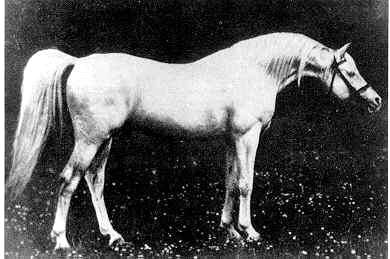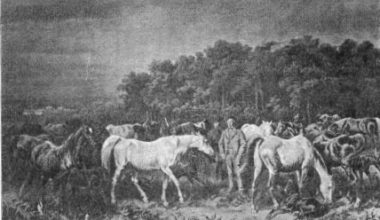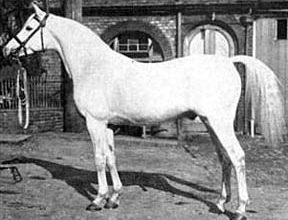Skowronek’s widespread presence in the pedigrees of horses registered as Arabians is arguably the raison d’etre for a number of different preservation initiatives including Al Khamsa, the Asil Club and the Pyramid Society. Since I was a boy, I had heard about Skowronek and thought his non-Arabian ancestry was common knowledge since the 1940s when my grandfather first learned about it. Attending the 2017 WAHO conference made me realize I was mistaken. Below are a number of viewpoints from people I either personally interacted with or overheard during my trip:
Two Arabs friends, from different Middle Eastern countries, who wanted to know what I thought about the whole Skowronek issue. Is he really not Asil?
A prominent British breeder who had this to say to me when I mentioned Skowronek and his non-Arabian ancestors: “Oh that’s not proven now is it? It’s just unsubstantiated rumor.”
A European breeder conversing at a dinner table: “Oh the DNA shows the Asil horses are all part breds too, so who cares?”
A European and an Australian shouting in a bus: “All the evidence has been published on Skowronek over 50 years ago. He has non-Arabian blood in his pedigree” said the European. “That’s bullocks! I read that so-called ‘evidence’ years ago. My registry says he is pure, so he’s pure,” said the Australian.
An Australian commenting: “WAHO accepts Skowronek as pure so that’s all that matters.”
When I returned home I thought more about the particular problem that my Arab friends faced. Unlike the vast majority of Westerners, they actually cared if a horse was pure. A horse’s untainted connection to the Bedouin tribes of Desert Arabia attracted them at a personal level. It was part of their own cultural identity as Arab men. However, because their English language ability was inadequate for complex topics, they had to rely on what others told them about horses bred in the West. How could they sift through all the conflicting opinions?
Out of my own curiosity and in an effort to help answer the question my Arab friends posed, I started digging into the subject. Everyone directed me to Ursla Guttmann’s book The Lineage of the Polish Arabian Horses published in 1968. This presented a challenge, how could you actually get your hands on a copy of a book that has been out of print for 50 years? When I finally was able to get it from a friend, I found all the Polish names just blended together. Even as a native English speaker, it was hard to penetrate. I read it numerous times before I was able to make sense of it all. While compelling, Guttmann gave me more questions than answers. Her book is largely based on secondary sources written in German. Were there any Polish primary sources available today or were they all “destroyed in the wars” as many claim? Had anything relevant to the issue been discovered in the past 50 years? Could DNA provide any answers? How did WAHO fit into this whole issue? Moreover, how should Skowronek be judged? Is this the best advice one could offer a person who wanted answers about Skowronek: go find, then read, a 50 year old, hard to follow, German and English book?
With these questions in mind I created the FaceBook page “Skowronek-A Partbred Arabian Horse” and registered this website www.skowronek.io. With the help from friends, I spent the better part of 2018 and 2019 digging up every major primary and secondary source ever referenced in connection with Skowronek. At this time only a few sources remain unattained. The next step is to translate the critical material from Polish, Russian, French and German into English.
The origin of Skowronek’s non-Arabian ancestors, referenced in primary sources that date back to 1799, will not surprise the readers of this blog. What some observers may find more interesting is the past 100 years of lies and duplicity by some of the most prominent names in the Arabian horse world.
The end state of this effort is a digital source, in simple language, which clearly traces and analyses Skowronek’s ancestry and the story of the debate behind it. That is the objective of this website.


